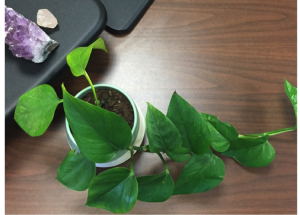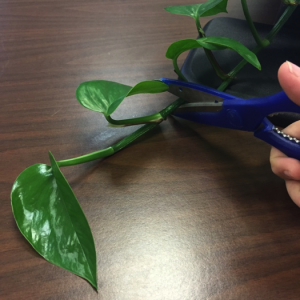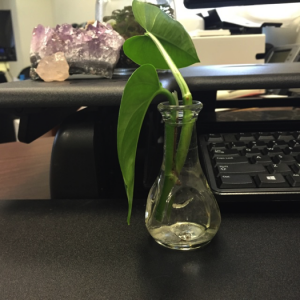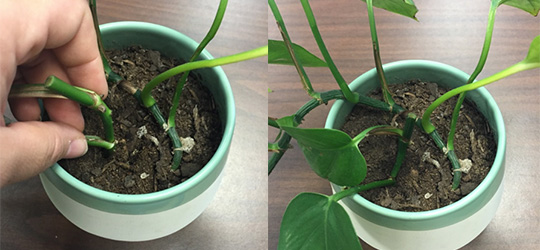
5 Ways to Increase Your Health at Home
Dear Reader,
Our homes are also our temples for restoration of mind, body and spirit.
When you think about it — health truly begins in your home.
You eat, sleep, and spend a majority of your time in this one place.
But what if your home is making you ill?
Chances are it is.
Good indoor air quality is a key factor in creating a healthy home and maintaining a healthy body.
The EPA estimates most people take nine of every 10 breaths indoors. And indoor air has two – five times more pollutants than outdoor air.1
Yikes!
The United Nations Development Program estimated that more than two million people die each year due to the effects of indoor air toxicity. Other studies estimate 14 times as many deaths occur globally from indoor air pollution versus those associated with outdoor air pollution.2
Unfortunately, health-hazardous synthetic fibers, adhesives, paints, pesticides, cleaners, building materials, and personal care products riddle the homes of most Americans, leading to constant exposure.
Logically, these toxins are compromising your lung health.
But, that is not the worst of it. We will get into long-term health effects in a bit.
What are you supposed to do about it?
You can’t throw out everything in your house that contains toxins. If you did, you would be sitting on a concrete slab in the middle of your yard.
Really, you would have to get rid of the house too!
There is one easy, natural, and aesthetic way to decrease pollutants and increase your indoor air quality — in fact, you might have watered one this morning. And four more ways to rid your home of toxins I will share in just a moment.
But first, let me tell you about the toxic culprits hanging out in your abode.
Home Is Where the Harm Is?
Volatile organic compounds (VOCs) make up a majority of indoor pollutants. VOCs are organic chemicals that evaporate at room temperature. Because they evaporate so easily, they can saturate the air in your home quickly.
Common VOCs include benzene, xylene, formaldehyde, tricloroethane, ethylene glycol and acetone — they are in a lot of household items.
Synthetic carpets, paints, adhesives, vinyl flooring, dry wall, particle board, and foam insulation all contain harmful chemicals that emit VOCs.
If this isn’t bad enough, the things we fill our homes with multiply the problem.
Furniture fabrics, cleaners, paper products, plastics, detergents, pharmaceuticals, cosmetics, air fresheners, and automobile exhaust add to the existing VOC levels.
The National Institutes of Health reports:
“Long-term exposure to volatile organic compounds can cause damage to the liver, kidneys, and central nervous system. Short-term exposure to volatile organic compounds can cause eye and respiratory tract irritation, headaches, dizziness, visual disorders, fatigue, loss of coordination, allergic skin reactions, nausea, and memory impairment.”3
What further increases VOC levels — most Americans use HVAC systems to heat and cool their homes. These systems recycle indoor air with little addition of outdoor air, offering little help in reducing the level of VOCs.
In fact, the HVAC systems can help to circulate VOCs in the home.1
And depending on the location of the outside air source, additional VOCs could be coming from outdoors as well.
Car exhaust and industrial emissions are major source of VOCs. If you live adjacent to a highway, parking lot, or industrial site, this increases the level of VOCs entering your home.
VOCs are everywhere. The good news is there are simple ways to lower their levels in your home.
Go Green to Get Clean, Literally
Research done by NASA indicates tropical house plants are effective in removing VOCs from the indoor environment. As tropical house plants emit water through their leaves, air is drawn in to their roots where microbes deactivate and essentially “eat” the harmful chemicals — removing them from your home.4
Also, a study in Environmental Health and Toxicology finds that homes with indoor plants experienced a decrease in levels of VOCs in just a three month period.5
Who knew plants were more than just housewarming gifts destined to be forgotten on an out-of-the-way shelf?
Pothos is a common house plant capable of air purification — it attacks carbon monoxide, formaldehyde and benzene. Placing a pothos near a garage or space close to a road will help decrease VOCs from exhaust.6
It also happens to be very easy to grow.
I have a large Jade pothos in my apartment I propagate regularly to grow “new” plants.
One of these “new” plants resides on my desk at work.

Desk Buddy.
To propagate, the first thing you need to do is find the roots. They are the small nodes at the base of the stem and leaf stalks.

Desk Buddy’s roots.
Next, you will want to find a spot on the vine to cut. Make sure there are at least two leaves in the cutting. Take sharp scissors and cut below the root.

It’s for your own good, Desk Buddy.
Then you will need to place your cutting into a glass container with water. Submerge the root nodes into the water. The roots usually start to grow within a few days. The vine can thrive in water. You can also transplant to soil once roots have sprouted.

“New” Desk Buddy.
You may also plant a cutting directly into soil. This can add more growth to an existing plant or you can create a “new” one.

Desk Buddy makes a friend.
Pothos like indirect sunlight and require watering one-three times a week, depending on soil and indoor temperatures.
Pothos is one of many plants that can improve your air quality. You can find an entire list here.
Here are four more tips to get you started on the road to lower VOCs in your home:
- If you no longer have a use for products containing VOCs, ditch them. Call your local waste management provider and ask them where you can do a hazardous drop off.
- If your products are still in use, be sure to store them in tightly sealed containers in well- ventilated areas — preferably outside as far from your home as possible.
- When you go to buy new products, be sure to read the labels thoroughly. Paints and solvents labelled as having lower VOCs are an obvious choice.
- Consider using natural household cleaners such as vinegar and baking soda, or at very least, buy cleaning products made from all-natural ingredients.
You can remember to the Three Rs when trying to lowering VOCs:
Remove anything not of use.
Reduce exposures.
Replace with natural or “green” products.
Please write in and let me know if you already own or purchase any VOC fighters! nmoore@lfb.org
Live well,

Natalie Moore
Managing editor, Living Well Daily
P.S. Pothos plants are available at most nurseries or at home improvement stores. They are typically less than $10 for a healthy sized plant.
Citations
[1] 10 Tips to Improve Air Quality & Make Indoor Air Safer to Breathe
[2] Houseplants Cut Indoor Ozone
[3]
Volatile Organic Compounds (VOCs)
[4]
Best Houseplants to Improve Indoor Air Quality
[5] Kim H-H, Yang J-Y, Lee J-Y, et al. House-plant placement for indoor air purification and health benefits on asthmatics. Environmental Health and Toxicology. 2014;29:e2014014. doi:10.5620/eht.e2014014.
[6]
Clean-Air Plants for Your Home
[7]
Vitamin D pill a day may improve exercise performance and lower risk of heart disease
Written By Natalie Moore
Natalie Moore is a dedicated health researcher with a passion for finding healthy, natural, and science-based solutions. After a decade of direct healthcare experience in western and natural medicine, she was involved in public health research before joining Living Well Daily.
View More Free Articles
Can't Shake Negative Thoughts? Check Your GUT First
Everyone struggles sometimes to stay positive or see the bright side of things. It’s part of being human. You might think those negative thoughts start in your brain—but it’s more complicated than that. A simple change to your daily habit can help dial down those negative feelings. New research suggests that this simple strategy could...
Repair Your Gut Barrier With the “Sunshine Cure”
Happy Fourth of July! As you celebrate with sunshine, good food, and great company, don’t forget—those summer rays aren’t just lifting your spirits… they’re also working behind the scenes to protect your gut and boost your health. Your gut health is more important than most people realize. It directly affects your overall well-being—from immunity to...
The 5 Health Numbers Your Doctor Wishes You'd Track
Have you ever been told you should “advocate” for yourself when it comes to your healthcare and wondered what that really means? It’s not just a buzzword—it’s a powerful concept that empowers you to take charge of your own health journey. In fact, it could save your life. Being your own best health advocate starts...
Do THIS Every 20 Minutes to STOP Digital Eye Strain
Our eyes are under assault—they are the true victims of our current digital age. And it’s because we are constantly glued to screens… phones, tablets, computers, TVs—you name it. Unfortunately, that screen time is taking a serious toll. Digital eye strain affects millions worldwide. In fact, up to 50 percent of computer users could develop...
Mailbag: The Calcium Mistake That's Hardening Your Arteries
“What type of calcium is best to take with bisphosphonates for osteoporosis? I know some varieties can build up in arteries. Thanks for the help.” —Bone Builder Hi Builder, When a patient asks me about calcium, I ask them a peculiar question in return… “Ever wonder how elephants and giraffes build and maintain their massive...
Doctor-Approved Method to Ditch Blood Pressure Meds
In a world where drug solutions dominate healthcare, it’s refreshing to discover that best remedies sometimes don’t involve a single pill. A groundbreaking study shows simple relaxation techniques could be your secret weapon against one of America’s deadliest health conditions. Best of all? It’s free, easy to start right away—and your results are bound to...
Trouble Hearing? Your Heart Could Be at Risk
With research exploding and data pouring in, scientists are uncovering some weird (and surprisingly helpful) health connections. Today’s odd couple? Hearing loss and heart failure. Turns out your ears and your ticker are more connected than you ever imagined. A major study published in the journal Heart looked at over 164,000 people for nearly a...
Stay Up Late? It Could Destroy Your Mental Health
If you dread mornings but come alive at night, there’s concerning new research you need to know about. A recent study found that “night owls” are at higher risk for depression. But before you rush to set your alarm to get up with the sun tomorrow, there’s more to the story… Chronotypes are essentially your...
Go from Flabby to Fit with this Common Vitamin
If you’re like many of us, you woke up one day, looked in the mirror, and realized you’re no spring chicken anymore. Even worse—when you weren’t paying attention—it seems you somehow misplaced the muscles of your youth and have gone from fit to flabby. Aging has a way of humbling us like that. But scientists...
Seasonal Allergy “Off Switch” Discovered in the GUT
“Doc, why am I suddenly suffering from seasonal allergies when I’ve never had them before?” It’s a question I get all the time—and my answer might surprise you. Stop looking up at the trees—and start looking down at your gut… Your sneezing fits, itchy eyes, and runny nose might have more to do with what’s...









